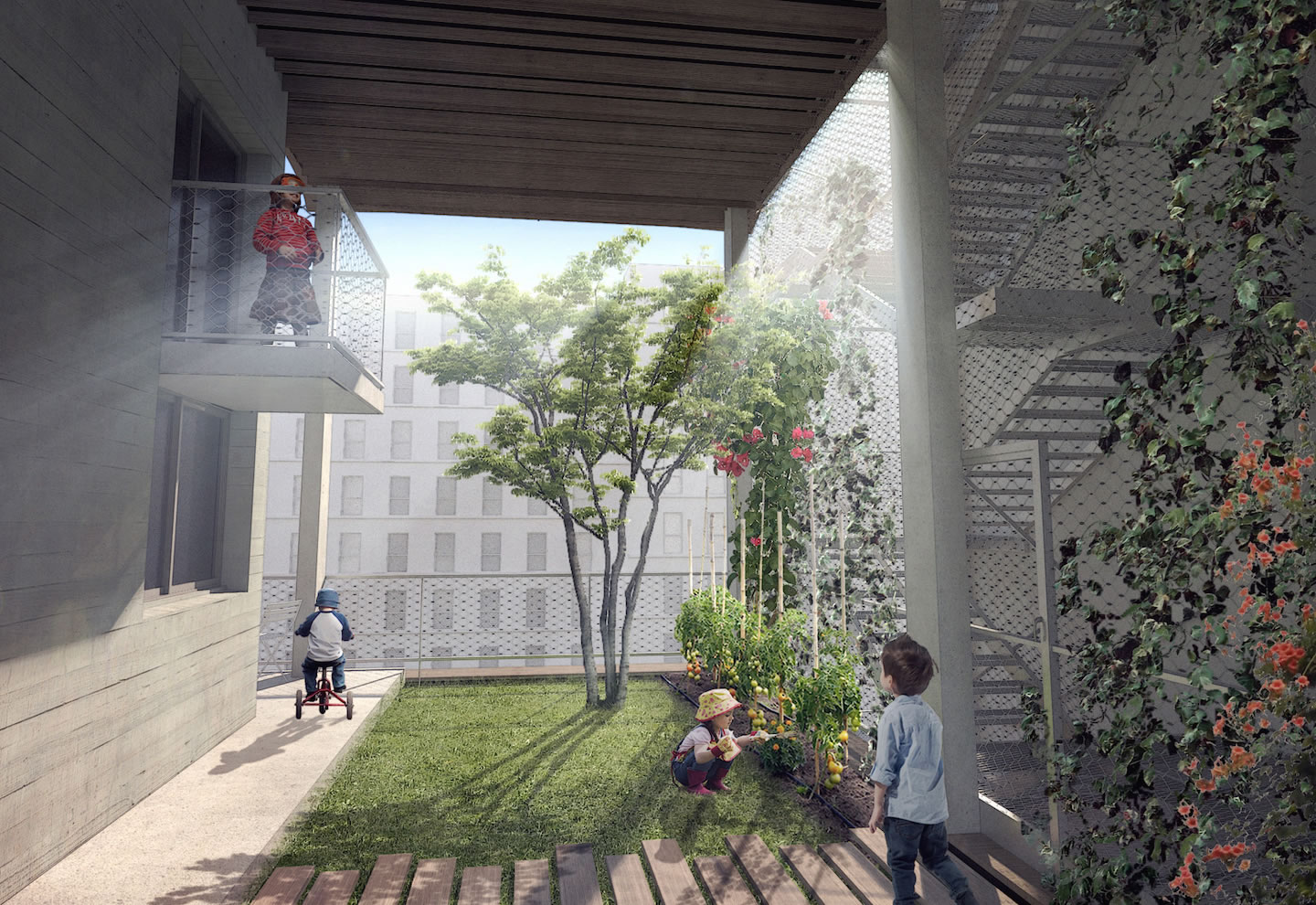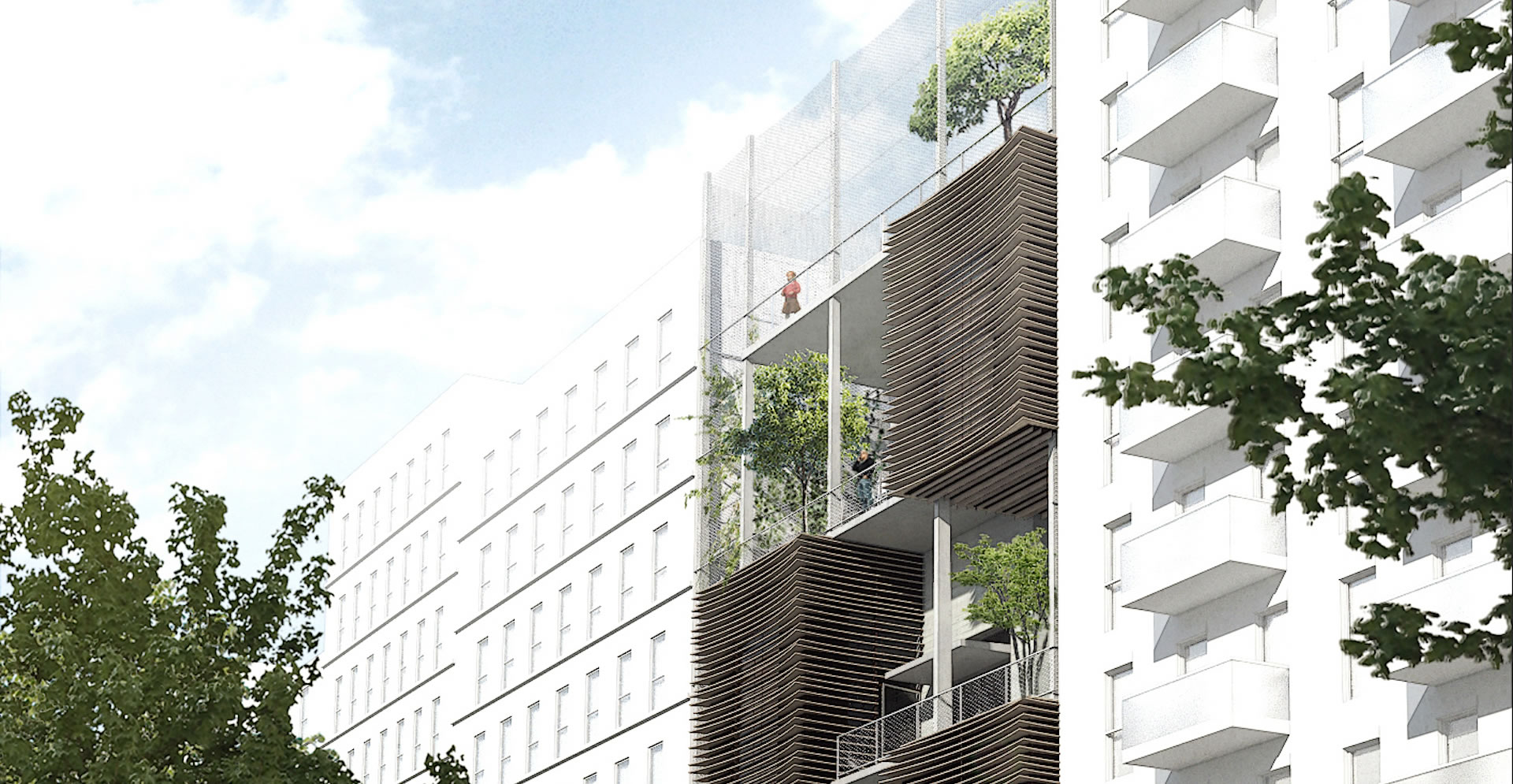
A dead-end in the sky
A vertical housing estate - Theoretical project 2016
A « Housing Estate in the sky » is a small vertical housing estate project. 4 duplex houses with gardens are superposed, with the ground floor used in common for parking and the roof as a communal living space.
The project was designed as a response to the increasing number of detached houses. It intends to create a pragmatic middle ground between an undesirable overdense city and a scattered urbanisation, socially dividding and ecologically unacceptable.
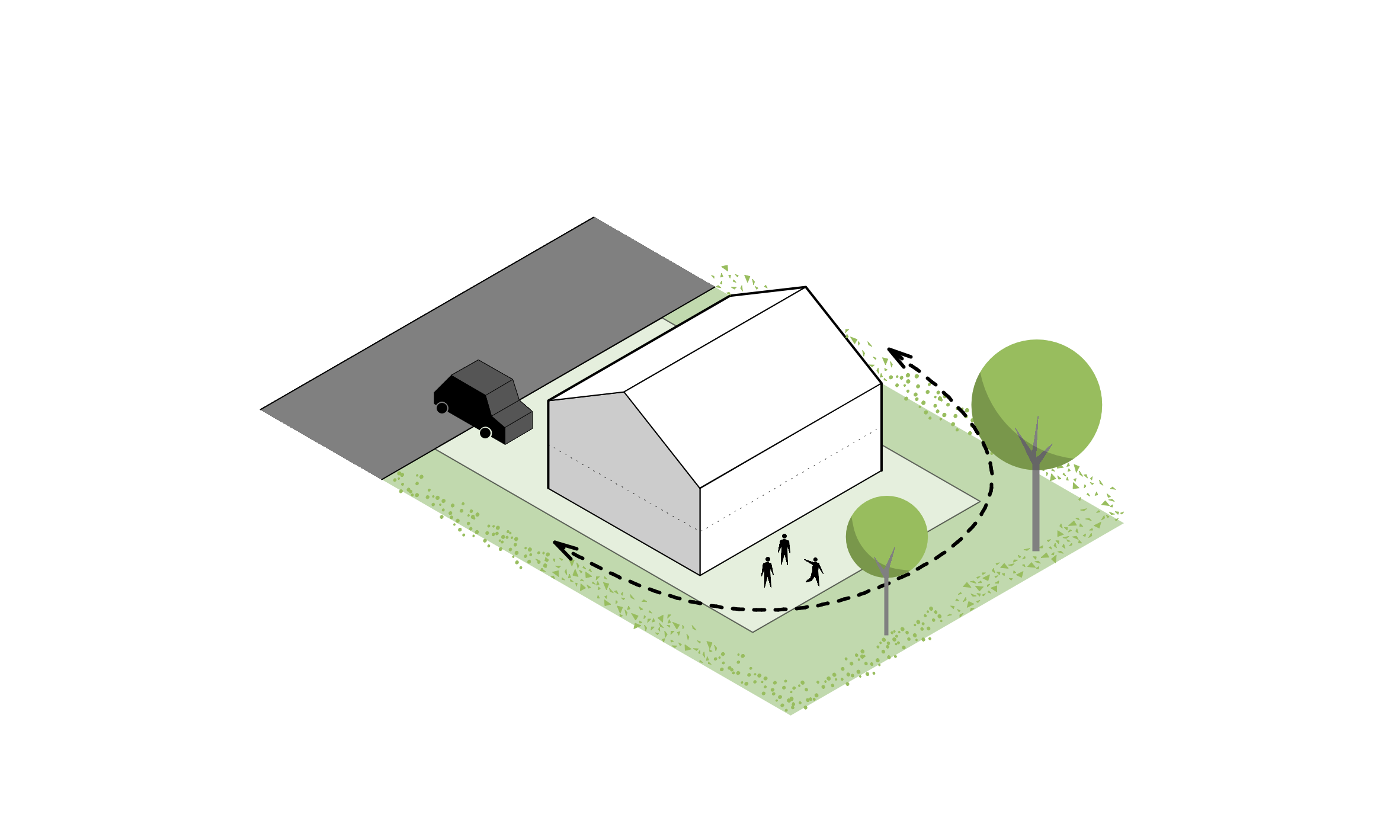
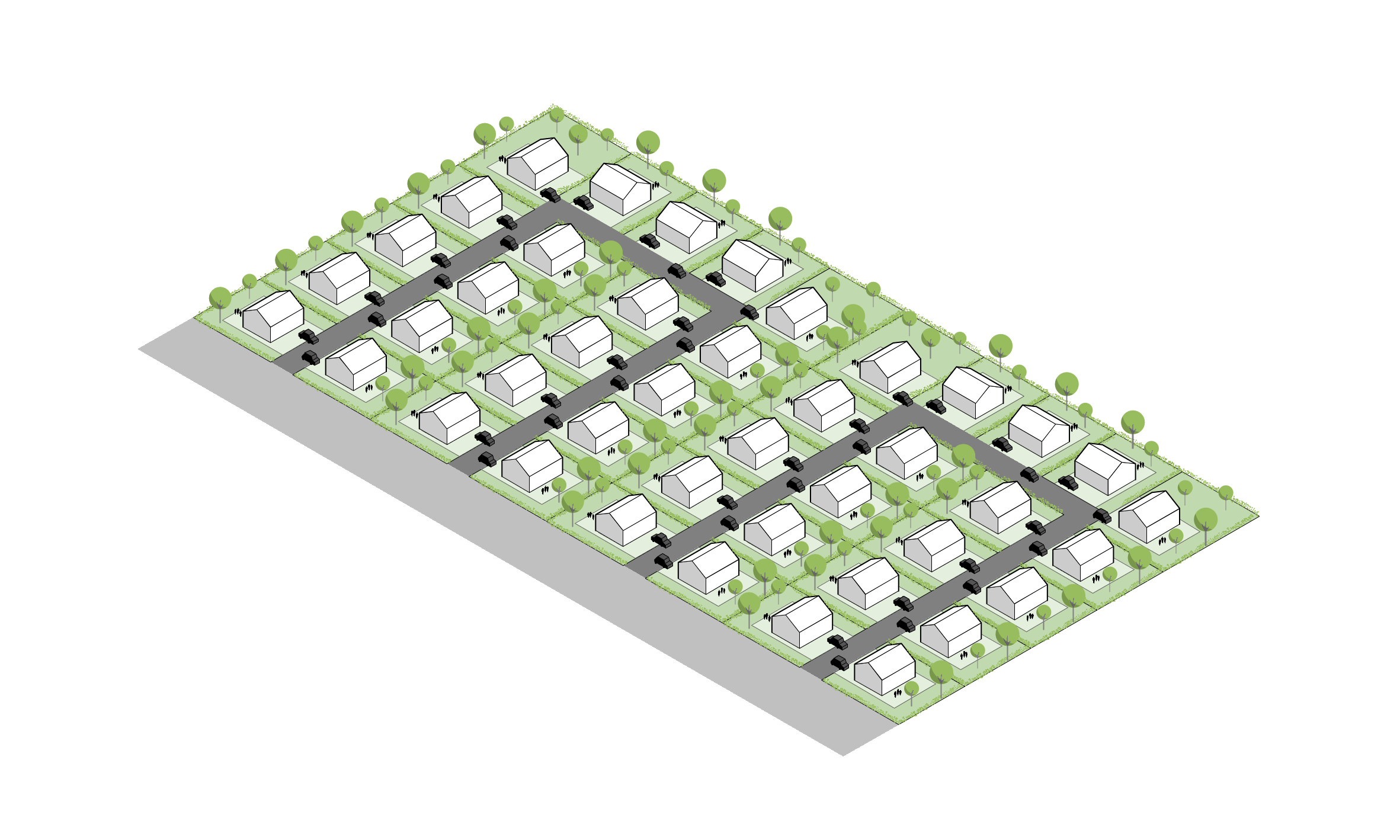
Ideal features of life in a detached house targeted by the project
- A private garden : visual ornament and revitalisation
- « To walk around my home» +detached house
- Significant housing capacity, inside as well as outside
- The residential street seen as a communal playground for teh neighbouring children considered a safe space by the parents
Urban sprawl and socio-spatial fragmentation : issues due to the duplication of the model
- An unreasonable overuse of the land, detrimental to natural spaces and farming lands
- Facilities highly expensive for the local authorities
- Homogeneous communities linving in closed circuit, thus forbidding social diversity and a continuous public space

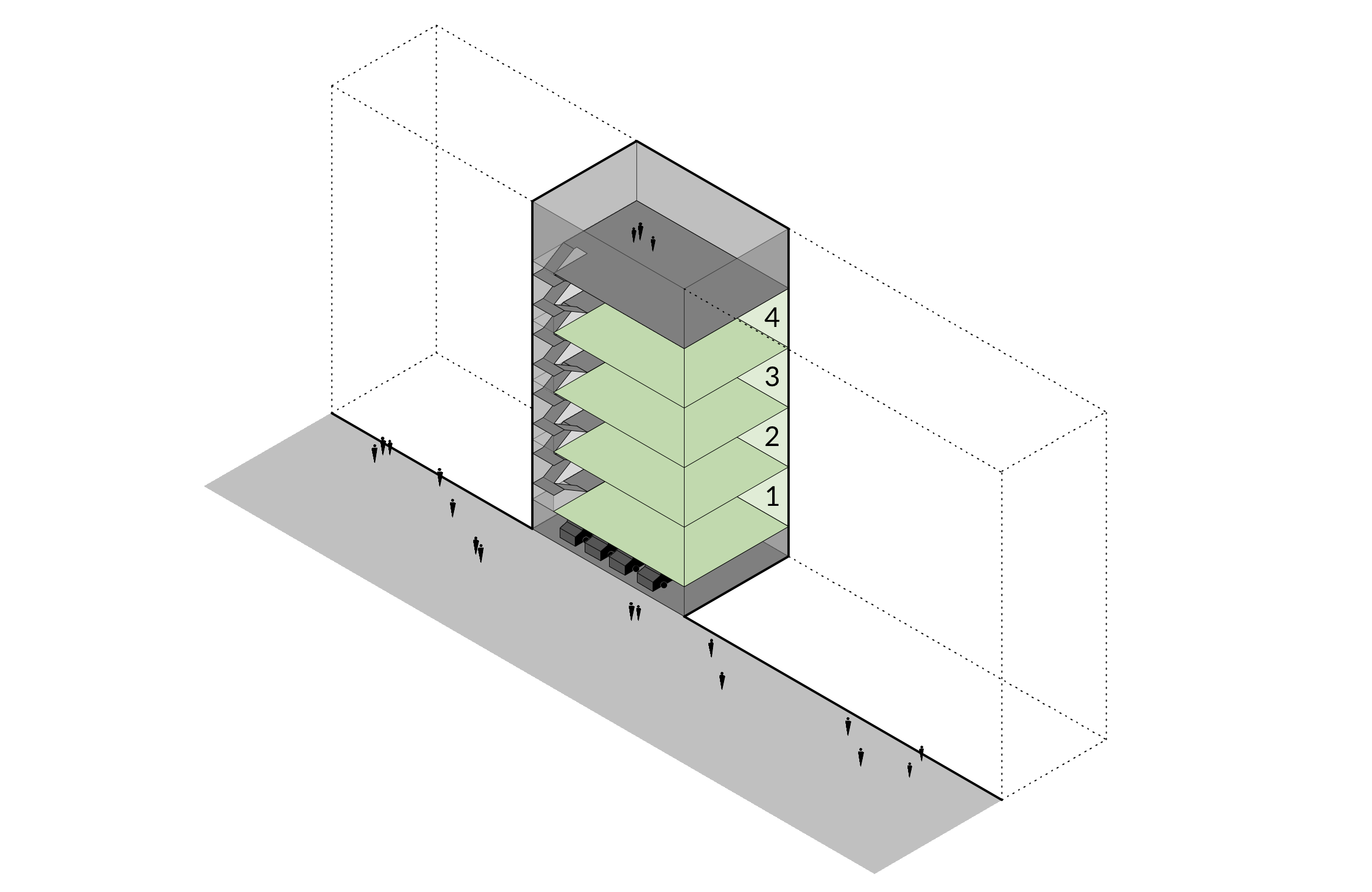
Reference frame of the study : a small housing estate of 4 plots around a cul-de-sac
- The dead end as a safe common space, far from the public space
- The dead end as the fulfillment of the will to live together in a residential space : a closed-in socially consistent community gathered around a practically private street, since it has no way out
The project : saving space by stacking up and opening up
- Stacking of 4 plots along a vertical street
- A ground floor as a common car-park, convertible into a place for spare-time activities
- The « dead end in the sky » : a poetic and airy common space, kept away from the street through its verticality
For an architect, designing a vertical version of a dead-end housing estate amounts to acknowledge this urban pattern as a fact, while accepting its right to exist, to better incorporate it into the city. It also means to cast a dispassionate look over the life in community, with the hope to control it, or at least to make it viable, more acceptable in the urban mesh than what already occurs, without architects.
The rehabilitation of the cul-de-sac in the city and its visibility shared with other urban patterns stimulates the inhabitants to participate in public life.
It facilitates a pedestrian access to services and therefore reduces the addictive use of the the car, a crucial issue in suburban areas.

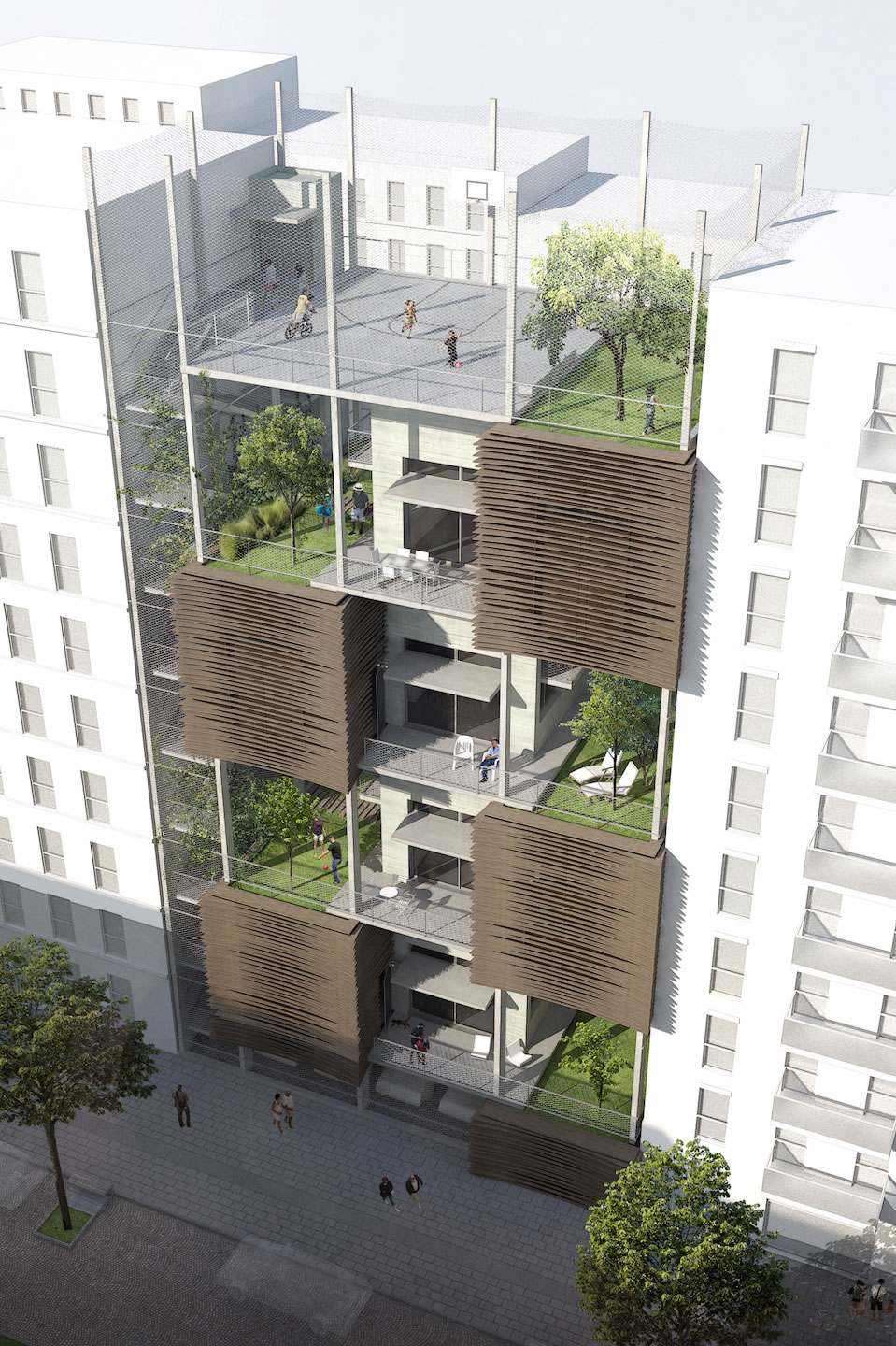
The heart of the project consists in getting rid of the usual codes of collective housing to bring back to it a significant part of the population which had turned its back on it. It carefully bans any piling up, the sad banality of a copy/paste routine standard and the crippling claustrophobia of the deweller under the 8 feet-ceiling.
More than a piling up of horizontal layers, the project is thought as a big staircase, an alternation of solid and hollow parts around a unifying trunk.
At the top lies the sky cul-de-sac, an airy and poetic common space, whose uses will be defined by the dwellers.

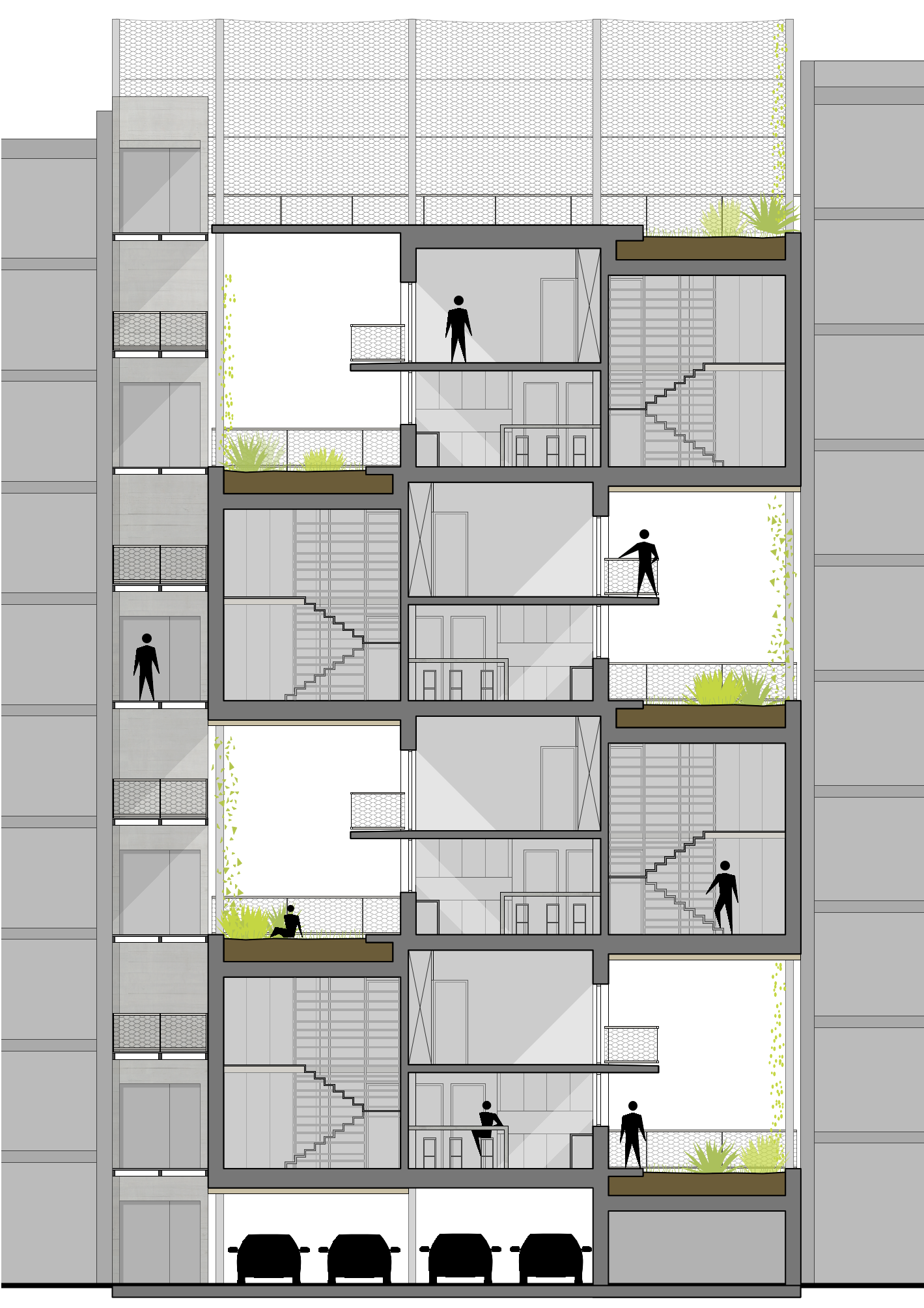
The monumental steps, the main component of the facade, are made of « tree pots », abstract striped masses containing living spaces with confortable volumes and heights, one height and a half, the last half-floor occupied by the earth needed to help grow the tree of the neighbour next-floor.
These « pots » are surrounded by blades of different sections, which in summer give a protection against the sun to the captor wall heating the living-rooms.
The monumental steps, the main component of the facade, are made of « tree pots », abstract striped masses containing living spaces with confortable volumes and heights, one height and a half, the last half-floor occupied by the earth needed to help grow the tree of the neighbour next-floor.
These « pots » are surrounded by blades of different sections, which in summer give a protection against the sun to the captor wall heating the living-rooms.

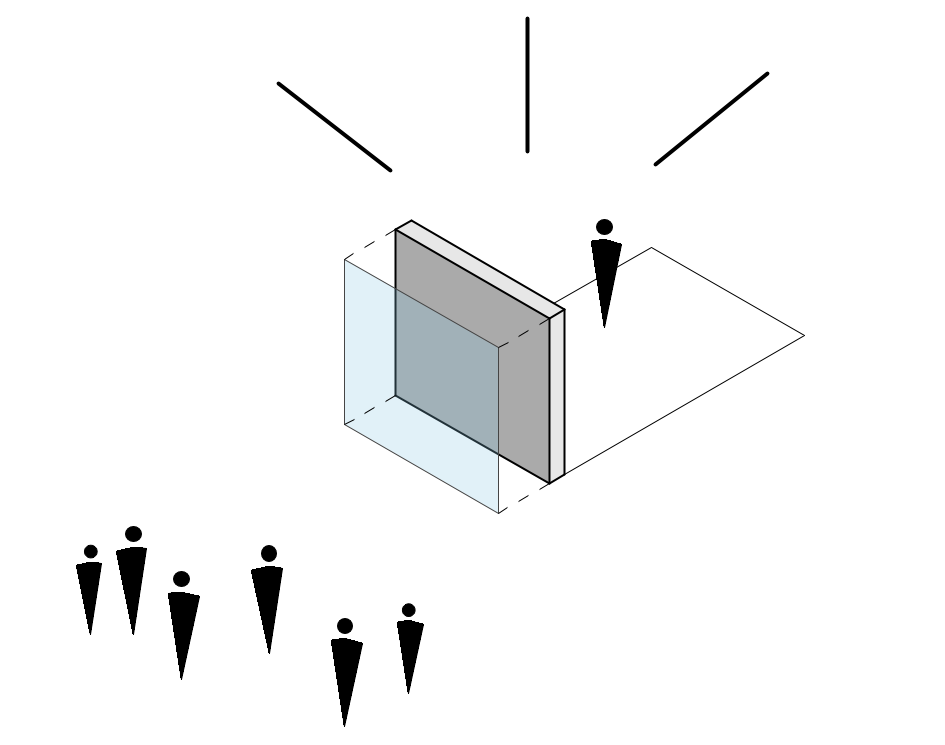
Opaque transparency
Paradoxical relation of a dweller living in the 21st century with transparency (see the project entitled « the wall & the hedge »)
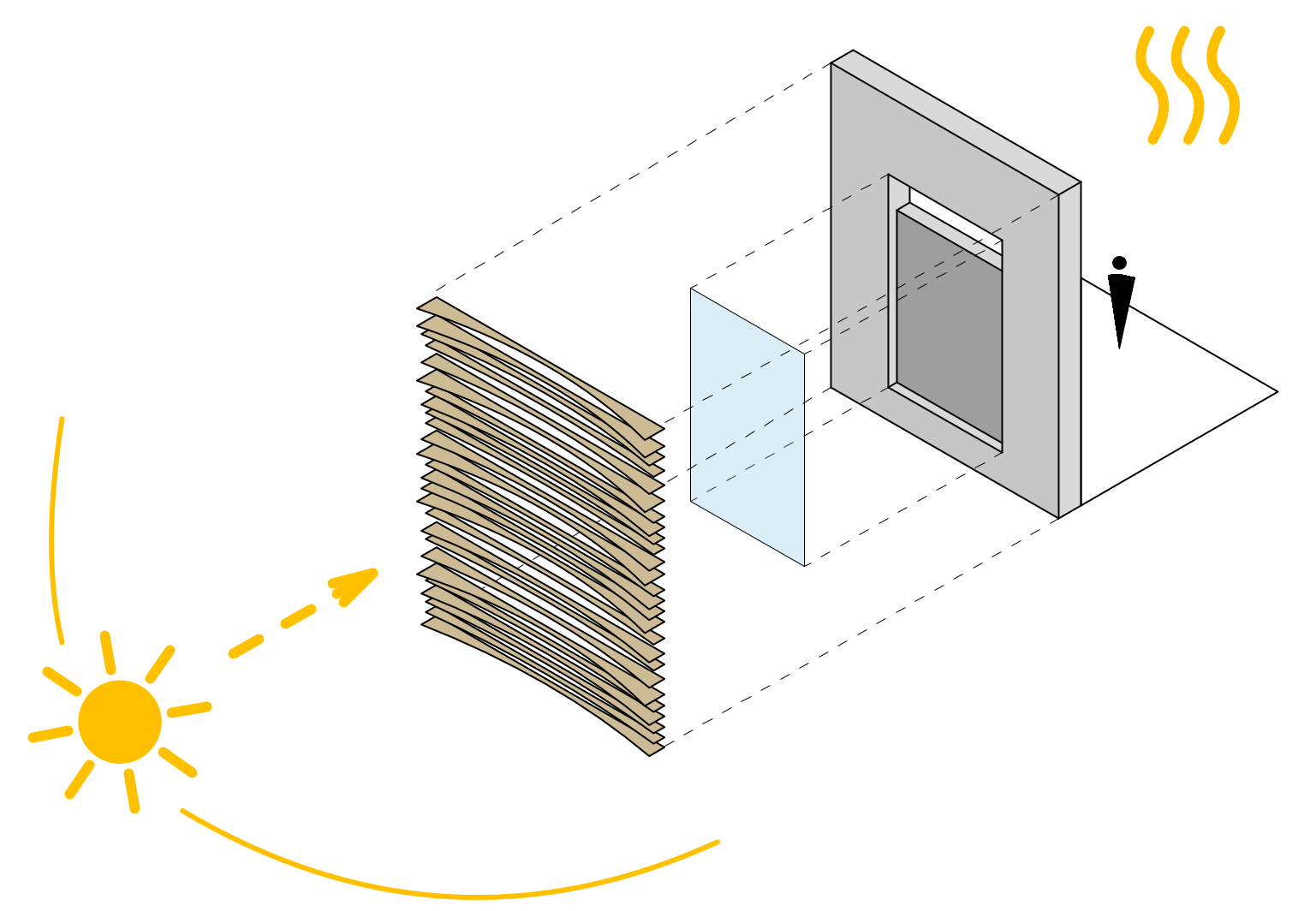
CAPTOR WALL & SOLAR PROTECTION
use of solar energy for heating
brise-soleil blades which shrink before the window-glass to let a free entrance of solar radiation in winter
The inner arrangement of the dwellings means to be rather classical, quite alike the collective figuration of what a house can be. Mainly aimed at families moving in suburban areas, the disposition of separate rooms offers a certain versatility.
On the ground-floor, you find the kitchen, the living-room, and the master bedroom. On the floor, two more rooms, one of which extends to a balcony overlooking the garden. One extra room is dedicated to storing, it is the house « attic », usually absent, unfortunately, in collective housing.

Plan Logement type A _ RDC

Plan Logement type B _ RdC
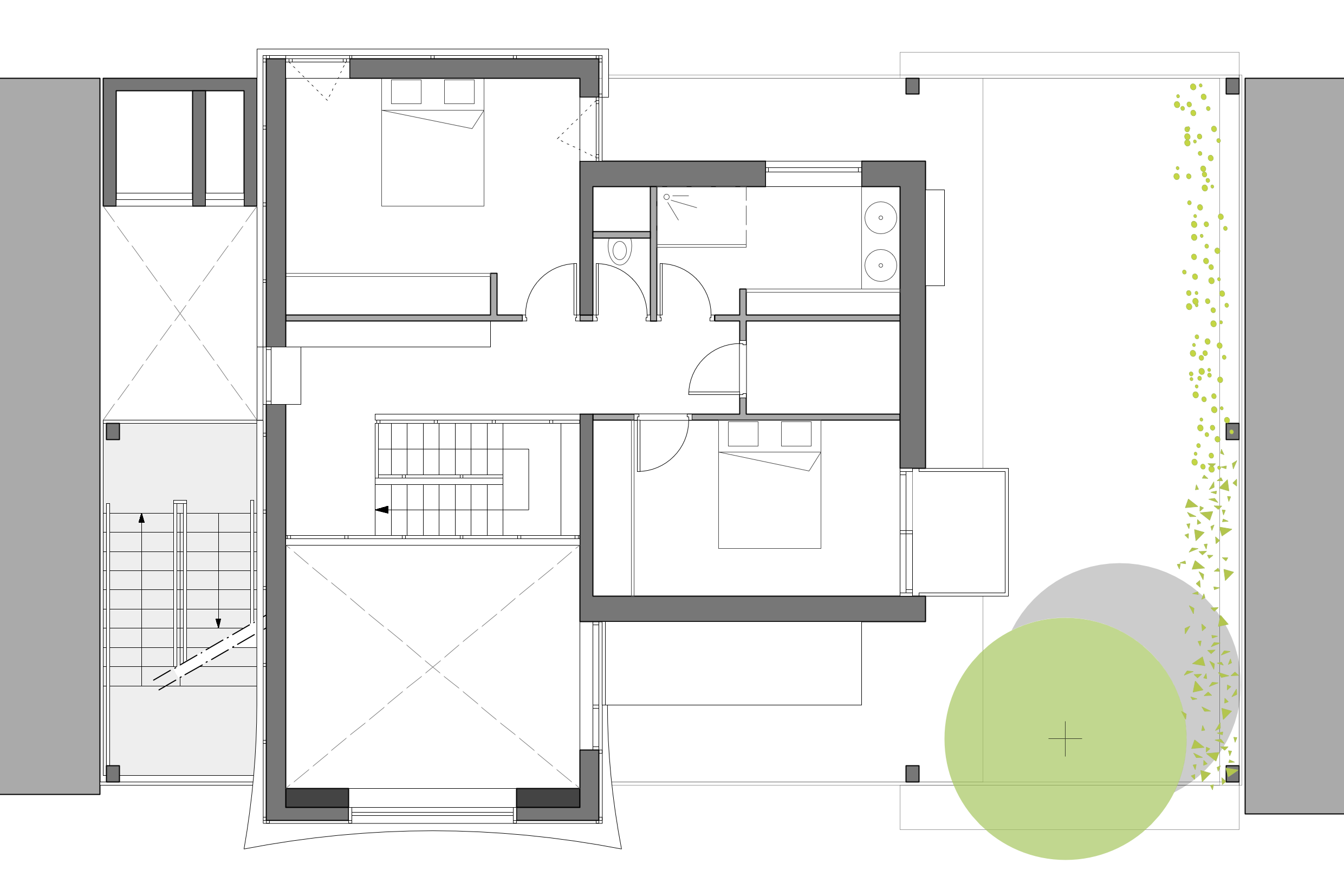
Plan Logement type A _ R+1
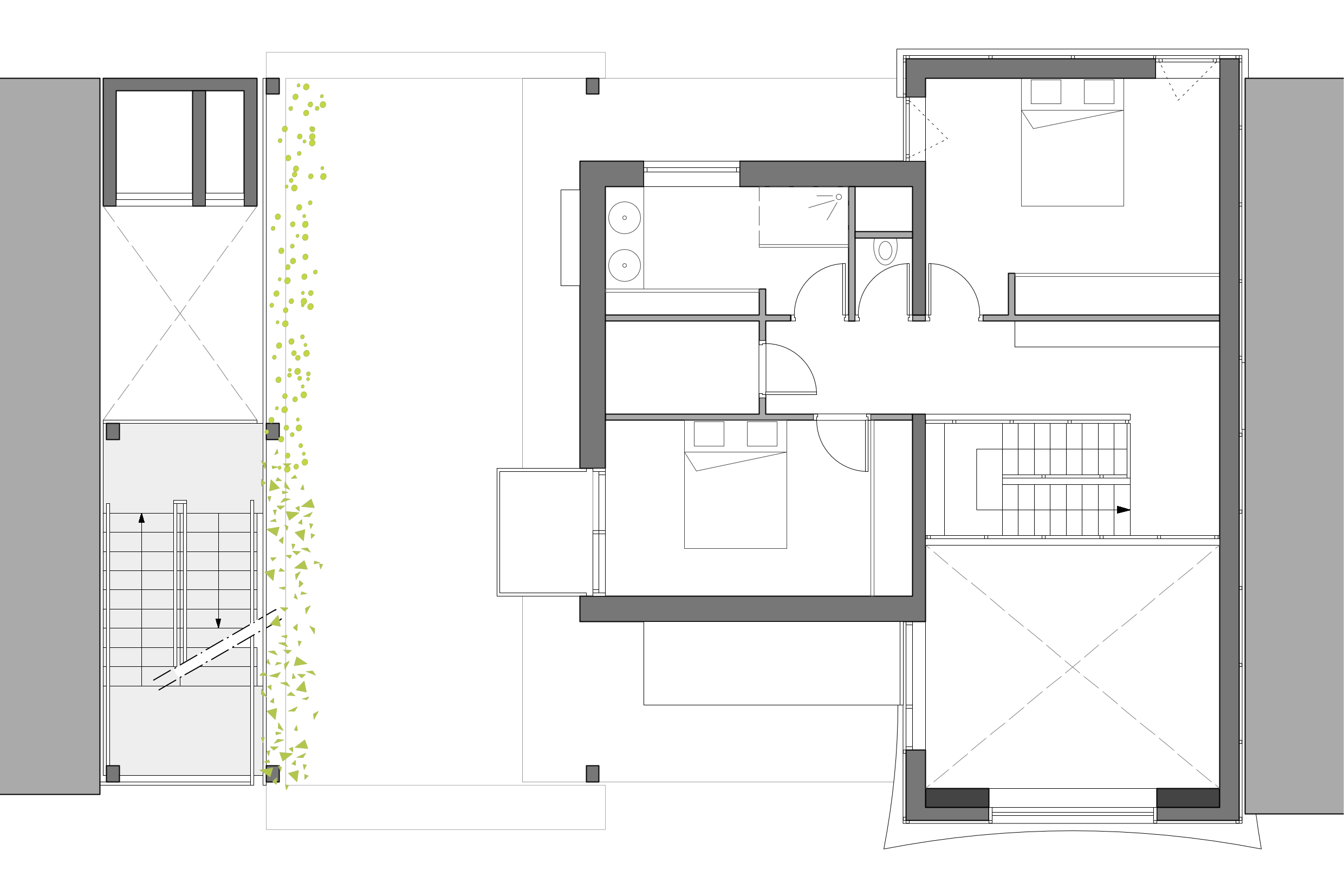
Plan Logement type B _ R+1

